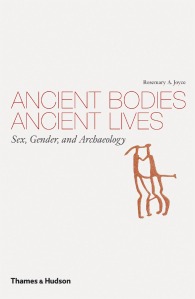A recent visit to the Royal Ontario Museum’s exhibition “The Warrior Emperor and China’s Terracotta Army” got me thinking again about the topic of women warriors.
The famous Qin dynasty (221 BC- 206 BC) terra cotta statues dominated the first galleries. But then there was another room with smaller Han dynasty (206 BC-220 AD) terra cotta warriors. And unlike their larger, more celebrated brethren, the Han figures included both male and female warriors.
The tomb of Western Han Emperor Jing (Liu Qi: 188-141 BC) and his empress Wang Zhi. The Hanyangling Museum at the site features examples of more than 3000 tomb figures. The website says they include the entire range of images of people, animals, and objects necessary to illustrate army life.
Included are the images of women warriors that struck me forecefully at the ROM.
The ROM exhibit text called attention not only to the genitalia distinctively indicated on both male and female figures, but also to different ways of representing the hair of male and female figures. The assumption is that originally the figures were dressed in textile costumes that did not resist the passage of time.
While many are shown standing, and were found in ranks like their better-known cousins of Qin dynasty’s Emperor Ying Zheng, there were also figures modeled to be seated on horseback. Originally, the warrior figures had movable arms but these were also of perishable material.
The question of women’s participation in warfare is one of those topics that comes up repeatedly in archaeology of sex and gender, and has been the basis for sharp critiques. Perhaps the best known examples are those characterized as “amazons”. In Ancient Bodies, Ancient Lives, I described the procedure used by archaeologist Jeannine Davis-Kimball to identify women in Iron Age Central Asian burials as warriors:
Davis-Kimball’s argument begins with historical documents from the Classical Greek world that talked about Amazons, women warriors, among the peoples northeast of Greece. Davis-Kimball identifies material traces of women warriors in the tombs of Central Asia, where both biological males and females are buried with weapons and gear for horses. In her study, categories of objects were defined that were taken as evidence of the life experiences of those with whom they were buried. These categories of objects were then compared with the biological sex of the person in each burial.
Davis-Kimball’s research has been criticized by others who emphasize that women with weapons and horse gear are still less common than men with these attributes. Part of the debate between her and her critics can be attributed to a confusion about what a “warrior” is: as I noted, Davis-Kimball suggests that these women probably participated in the defense of herds and home, not what the word “warrior” conjures up in the popular imagination.
The Han Dynasty tomb figures are quite different. Here, women do form part of a formal army in a highly stratified society.
In Women Warriors: A History, anthropologist David E. Jones traced the history of women warriors in Chinese dynastic society beginning with texts about the Shang Dynasty (1850-1100 BC). Most of the Han Dynasty examples recorded in texts that he mentions were either royal women leading armies, or noble women defending their family estates. These are the kinds of exceptions to the rule that never change people’s belief that normally, women are not part of the military forces. The exceptional woman warrior of the Han is perhaps most vividly represented by the literary figure of Mu-Lan, where the storyline insists precisely that she replaced the normal male warrior (her father) by passing as male (adopting male dress and hairstyle).
The tomb figures don’t show these exceptions to the rule. They are evidence of a practice of employing women, marked as female, in the same positions as men.
In an article called “From Cross-Dressing Daughter to Lady Knight-Errant: The Origin and Evolution of Chinese Women Warriors”, Sufen Sophia Lai examines the place of women warriors in Chinese literary tradition. She reports a text about the fifth century BC that she says suggests a belief that
not gender, but training, is relevant to the creation of an excellent troop… This episode implies that Chinese kings and military leaders could see women as potential warriors.
Most of the specific women celebrated in texts that she discusses, historical and literary, were exceptional: queens or noble daughters.
The Han dynasty tomb figures are not representations of noblewomen, queens leading armies, or singular daughters like Mu-Lan. They are representations of foot and cavalry troops of mixed sex forming a standing army. They are mute evidence for something less exceptional, and thus more interesting than the rare powerful woman who can challenge her own circumstances.


October 29th, 2010 → 5:51 pm
[…] a more-modern context, Ancient Bodies, Ancient Lives points out that famous terracotta warriors included female figures along with the male ones that […]
October 30th, 2010 → 10:29 am
[…] This post was mentioned on Twitter by Vonda N. McIntyre and JM Rivas, JM Rivas. JM Rivas said: RT @vondanmcintyre: Cool article at cool site: ancient women warriors: https://ancientbodies.wordpress.com/2010/10/24/women-warriors-and-terracotta-armies/ […]